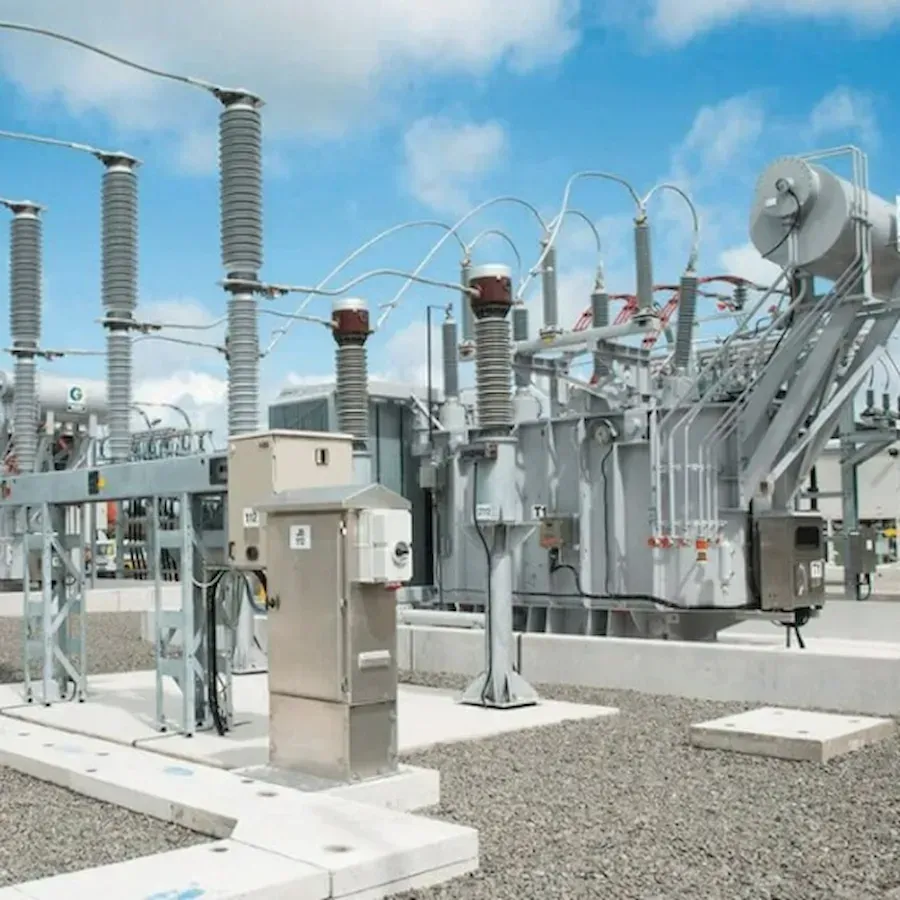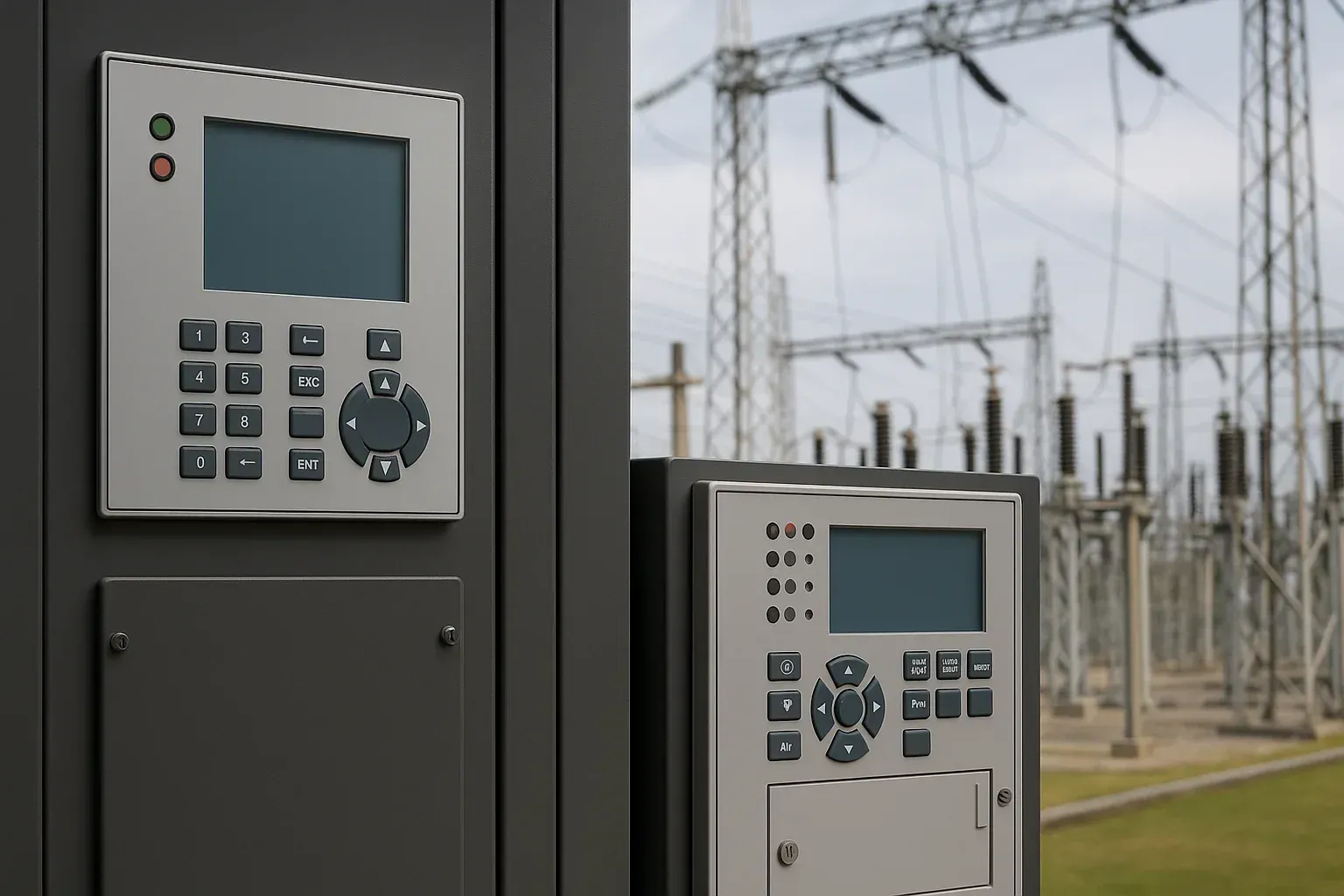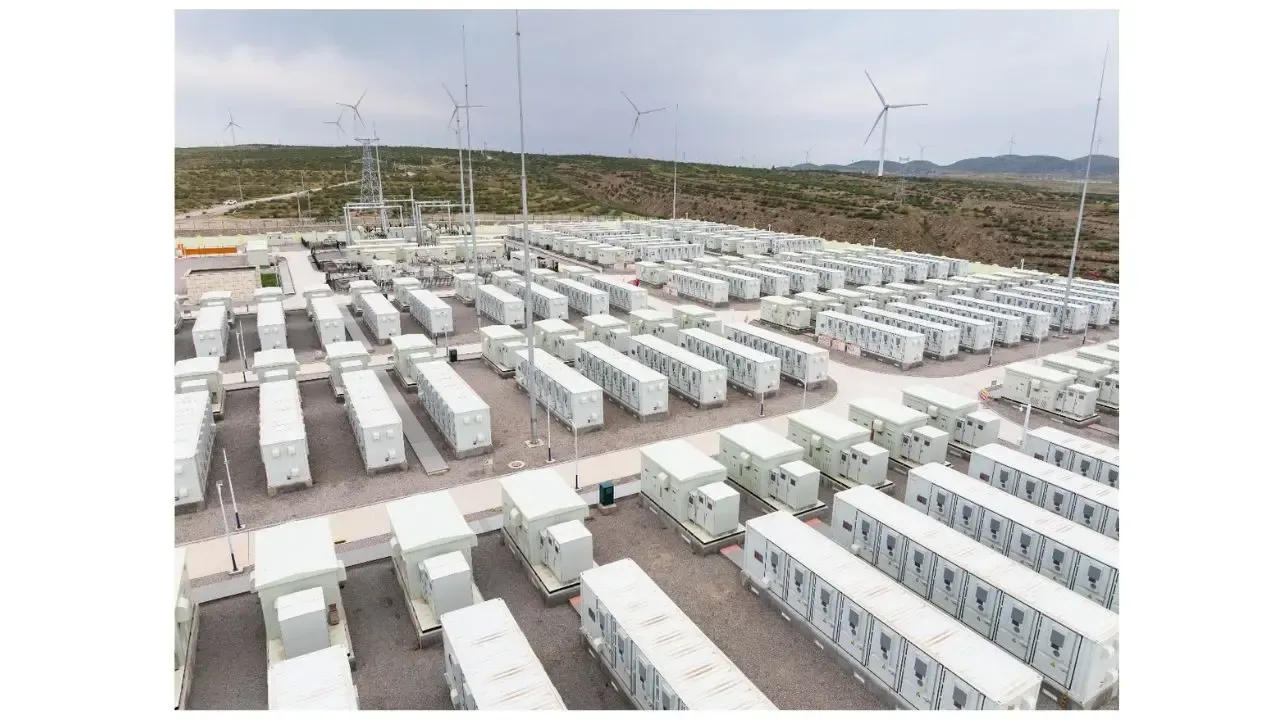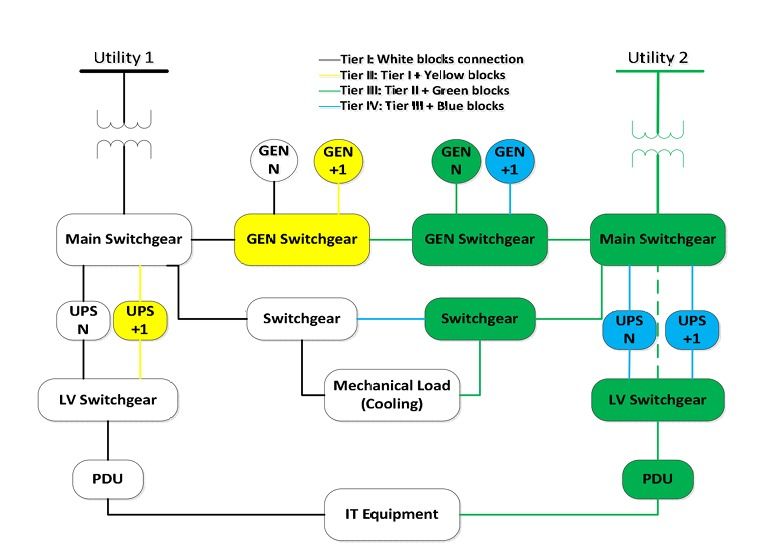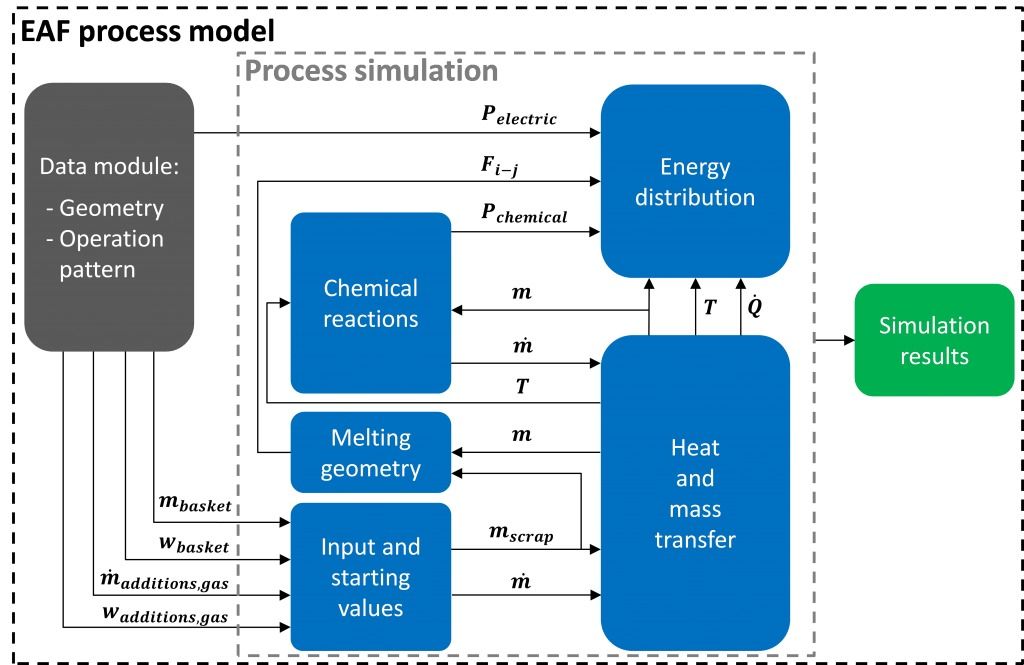Utility-Scale BESS Engineering Services
Keentel Engineering offers full-scope electrical engineering services for utility-scale battery energy storage systems (BESS) across the United States. With over 30 years of experience in renewable integration, substation design, and high-voltage systems, we deliver grid-compliant BESS solutions that support energy reliability, peak shaving, frequency regulation, and long-term asset optimization. Whether you're planning a new 100 MWh standalone system or hybrid solar + storage site, our engineers bring deep technical insight and precise execution to every project.

Why Choose Us
At Keentel Engineering, we take pride in being the go-to engineering firm for power and utility system planning, design, control, and analysis. Some of the many attributes of our company that set us apart are:
Client-Focused Work Approach
Our team works cohesively on every project and with every client. We first develop a solid understanding of your project goals, requirements, and needs. From concept to commissioning, we assist you in every step.
30 Years of Experience
We have over three decades of experience in design and interconnection. Rest assured, we have the knowledge, understanding, and expertise to handle and execute all types of projects with sheer perfection and superior workmanship.
Quality with Innovation
At Keentel Engineering, we have established our stellar market reputation on quality, work ethics, and innovation.
Attention-to-Detail
We work on every project with laser focus and attention to detail. This enables our team to deliver desired results with complete satisfaction.
Let's Discuss How to Optimize Your Next Project
Submit
We will get back to you as soon as possible.
Please try again later.
Download our Utility-Scale BESS Engineering flyer
Please click the Download button to get our Utility-Scale BESS Engineering flyer.
Utility-Scale Battery Energy Storage System (BESS) Engineering
Welcome to our comprehensive range of electrical engineering services designed exclusively for utility-scale battery storage projects. Our team of experienced professionals is dedicated to providing innovative and reliable solutions that optimize energy storage, grid stability, and overall project performance. From initial design and installation to ongoing maintenance and optimization, we offer a complete suite of services tailored to meet the unique requirements of your battery storage project.
Our Services
POI Interconnection Engineering Support

Our skilled and knowledgeable engineering team has a rich history in designing, developing and commissioning various substation and interconnection engineering support projects.

Feasibility Studies and System Design
Before any battery storage project begins, our team performs in-depth feasibility studies to evaluate the technical and economic viability of integrating a utility-scale BESS solution. We analyze energy demand profiles, utility interconnection requirements, grid capacity, and project-specific goals. Based on these insights, we craft a comprehensive system design that aligns with both the technical constraints and long-term performance expectations of your project.

Battery Technology Selection
Selecting the right battery technology is critical to the success of any energy storage system. Our engineers help you choose between lithium-ion, flow batteries, or emerging chemistries based on energy density, cycle life, discharge profiles, and cost-efficiency. We ensure that the selected battery technology is compatible with your operational goals and meets both performance and budgetary requirements.

Electrical System Integration
We specialize in the full electrical integration of BESS solutions. This includes detailed electrical design for battery modules, inverters, transformers, and control systems. Our engineers handle all interconnection components and grid interface points, ensuring seamless communication between the storage system and the utility network. Every system is designed to maximize safety, efficiency, and compliance with grid codes.

Installation and Commissioning
Keentel Engineering oversees the entire installation and commissioning process. We coordinate the deployment of battery units, wiring infrastructure, power conditioning equipment, and protection systems. Our team conducts rigorous testing procedures, functional verifications, and performance checks to ensure your BESS operates safely and efficiently from day one.
POI Interconnection Engineering Support

Our skilled and knowledgeable engineering team has a rich history in designing, developing and commissioning various substation and interconnection engineering support projects.

Grid Connection and Energy Management
We offer comprehensive grid connection services that include application support, SCADA integration, and smart energy management systems. Our engineers implement real-time energy flow controls, load shifting algorithms, and demand response strategies to improve grid stability and ensure your BESS contributes effectively to energy resilience.

Safety and Compliance Assurance
Safety is at the core of our BESS engineering services. We conduct full risk assessments, fire mitigation planning, and arc flash studies, while adhering to key standards such as NFPA 855, UL 9540A, and IEEE 1547. Every system is designed and tested with robust safety protocols to meet local, state, and national compliance standards.

Performance Monitoring and Optimization
Our advanced monitoring platforms allow real-time tracking of battery performance, state-of-charge (SOC), degradation patterns, and temperature profiles. We analyze operational data to identify optimization opportunities, helping improve energy efficiency through strategies like peak shaving, frequency response, and revenue stacking.

Maintenance and Upgrades
To ensure long-term system reliability, we provide structured maintenance programs including preventive inspections, remote diagnostics, and field servicing. As technologies evolve, our team is equipped to upgrade hardware, firmware, and software systems—extending the lifespan and performance of your BESS installation.

Why Utility-Scale Battery Storage Is Critical
Battery energy storage systems are a vital component of today’s energy infrastructure. They enable energy shifting, reduce peak demand strain, provide critical backup during outages, and stabilize grid frequency. For utility-scale projects, BESS also plays a crucial role in integrating renewables, responding to FERC requirements, and enabling microgrid deployment. Keentel Engineering’s tailored approach ensures your system meets functional, safety, and interconnection expectations—while optimizing financial return and grid support.
What Sets Keentel Apart in BESS Engineering
Keentel’s BESS solutions go far beyond basic design. Our in-house engineers combine utility-grade expertise with innovative technologies to deliver high-performance systems that meet evolving grid standards and client-specific energy goals.
We specialize in:
- IEC 61850 integration for communication protocols
- UL 9540A compliance and safety risk mitigation
- IEEE 1547-based interconnection designs
- Customized SCADA and Energy Management Systems (EMS)
- EMS/PCS configuration for charge-discharge controls
- Performance optimization for different battery chemistries (LFP, NMC, flow)
- Interconnection modeling and POI engineering support
From concept to commissioning, we provide detailed documentation, safety compliance, and lifecycle-ready engineering that minimizes risk and maximizes system ROI.

Full Lifecycle BESS Engineering Services
Keentel Engineering supports every phase of your battery energy storage project with precision. Our service framework includes:
Feasibility Studies & Site Evaluation
We begin with a thorough assessment of your site conditions, energy goals, grid constraints, and load profiles. This includes load shifting potential, peak demand analysis, fire safety zoning, and market participation opportunities (e.g., frequency regulation, capacity markets).
Technology Selection & System Design
Based on technical and financial modeling, we help you choose the right battery chemistry, enclosure type, and PCS/EMS components. We prepare detailed one-lines, grounding plans, interconnection drawings, relay protection studies, and support IEEE 1547.1 testing requirements.
Grid Interconnection & POI Engineering
Our interconnection support team handles all utility submissions, studies (e.g., short circuit, load flow), and Point of Interconnection (POI) engineering. We ensure compliance with FERC, state utility rules, and ISO/RTO protocols like CAISO, PJM, or ERCOT.
BESS Installation Support & Commissioning
During construction, our engineers provide field coordination and oversight to align the electrical buildout with the system design.
We ensure:
- Safe installation of battery containers, PCS, transformers, and switchgear
- Integration with substation or solar site infrastructure
- Real-time SCADA & EMS configuration
- Pre-commissioning, energization, and functional testing
Every component is tested for voltage compliance, fire safety (per UL 9540A), and operating procedures. We also support training for O&M teams post-commissioning.

Ongoing Support – Monitoring, Maintenance & Upgrades
Post-commissioning, we provide long-term engineering support to maintain safety, reliability, and peak performance of your BESS system.
Our services include:
- Remote system monitoring setup and real-time alerts
- Preventive maintenance schedules
- Troubleshooting and root cause diagnostics
- System upgrades (battery module replacement, inverter enhancements)
- Firmware and EMS reprogramming
- Compliance documentation updates (e.g., NERC, NFPA 855)
We also help clients unlock additional value through demand response participation, carbon credit tracking, and utility performance benchmarking.

Why Choose Keentel Engineering for Utility-Scale BESS Projects
At Keentel Engineering, we bring over 30 years of deep technical expertise in utility infrastructure, battery energy storage systems, and grid-connected design. Our approach combines engineering accuracy with real-world implementation to ensure your BESS project is safe, compliant, and future-ready.
What sets us apart is our tailored, client-focused engineering. We begin by understanding your energy goals, site conditions, utility requirements, and financial objectives. From there, we create a customized engineering plan that aligns with your use case—whether it's renewable firming, grid services, or standalone energy storage.
We are known for integrating advanced technologies into our designs. Our team applies the latest standards including IEEE 1547, NFPA 855, and UL 9540A, along with best practices in EMS programming, SCADA integration, and cybersecure grid communication. We also assist clients in qualifying for incentive programs and regulatory compliance to maximize ROI.
Beyond design, we provide lifecycle engineering support—from interconnection and commissioning to long-term maintenance, performance tuning, and system upgrades. Our engineers stay engaged throughout the asset’s lifecycle to ensure consistent energy delivery and system longevity.
Choosing Keentel means partnering with a U.S.-based engineering firm that values detail, innovation, and performance. We don’t just deliver drawings—we deliver resilient, compliant, and revenue-generating BESS systems built for the evolving grid.
Download our Utility-Scale BESS Engineering flyer
Please click the Download button to get our Utility-Scale BESS Engineering flyer.
What sets Keentel apart
At Keentel Engineering, we stand apart through our unwavering commitment to client-focused collaboration, technical excellence, and long-term energy performance. Every battery energy storage system (BESS) project we take on begins with a deep understanding of your goals—whether related to performance metrics, regulatory obligations, or financial constraints. We don’t offer one-size-fits-all solutions. Instead, we tailor each BESS design to align with your specific requirements, whether you're deploying a 10 MW/40 MWh standalone system or scaling an integrated solar+storage application.
With over 30 years of industry experience, our team brings a proven track record in utility infrastructure, high-voltage electrical design, and renewable energy integration. We approach every detail with engineering precision—ensuring your project meets the highest standards for safety, reliability, and grid code compliance. Our work adheres to critical standards such as IEEE 1547, UL 9540A, and NFPA 855.
Innovation drives every project we deliver. Keentel actively incorporates the latest advancements in SCADA integration, EMS programming, smart grid controls, and evolving battery chemistries. We continuously invest in modern tools, training, and methodologies to ensure our clients stay ahead of regulatory changes and technical challenges.
Beyond engineering expertise, we are deeply committed to reliability and sustainability. Our solutions are designed not only to meet short-term milestones but also to deliver performance that lasts—minimizing downtime, reducing emissions, and increasing energy efficiency across the lifecycle of the system. Whether your goal is grid stability, peak shaving, or renewable load shifting, Keentel Engineering is the trusted partner you can rely on for utility-scale battery storage success.
FAQ for Utility-Scale Standalone Battery Storage Engineering Services
1. What is utility-scale standalone battery storage?
Utility-scale standalone battery storage refers to large-scale energy storage systems designed to store electricity generated from renewable sources or the grid. These systems are typically used to provide grid stability, improve energy efficiency, and support the integration of renewable energy by storing excess energy during low demand periods and discharging it during peak demand or when renewable generation is low. These battery systems are deployed independently of generation systems, providing a flexible and reliable energy storage solution.
2. What services do you offer for utility-scale standalone battery storage engineering?
Our Utility-Scale Standalone Battery Storage Engineering Services include:
- Feasibility Studies: Assessing the viability of battery storage projects, including site selection, technical specifications, and economic feasibility.
- System Design & Layout: Designing battery storage systems, including battery selection, inverter systems, and overall site layout to maximize efficiency and performance.
- Electrical Design & Integration: Designing the electrical components and integration with the grid, including transformers, switchgear, and protection systems.
- Energy Management Systems (EMS) Design: Designing control systems to manage the charging and discharging of the battery storage system in coordination with grid operations and renewable energy generation.
- Grid Connection & Interconnection Studies: Conducting power flow studies, fault analysis, and grid stability assessments to ensure smooth integration with the existing electrical grid.
- Regulatory Compliance & Permitting: Navigating local, state, and national regulations to ensure compliance and help with the permitting process.
- Project Management: Overseeing the project from design through to construction, commissioning, and operations.
- Construction Supervision: Managing the installation of battery storage systems, ensuring safety, quality, and adherence to the project timeline.
- Commissioning & Testing: Verifying that the battery storage system performs as designed and integrates successfully with the grid.
- Operations & Maintenance Support: Providing ongoing support to optimize system performance and ensure longevity.
3. Why is battery storage important for the grid?
Battery storage plays a crucial role in enhancing grid stability and flexibility by:
Storing Excess Renewable Energy: Storing excess energy from renewable sources like wind and solar when production exceeds demand and discharging it during peak periods when demand exceeds supply.
Grid Stability: Providing backup power to stabilize the grid during times of voltage or frequency fluctuations, enhancing grid reliability.
Supporting Grid Balancing: Offering frequency regulation and voltage control services to balance supply and demand in real-time.
Reducing Curtailed Energy: Preventing the wastage of energy generated from renewable sources by storing it instead of curtailing it during low demand periods.
4. What factors are considered during the design of a utility-scale battery storage system?
The design of a utility-scale battery storage system takes into account several critical factors, including:
- Energy Storage Capacity: Determining the required storage capacity (measured in MWh) based on the desired duration of energy delivery.
- Battery Technology Selection: Choosing the appropriate battery technology (e.g., lithium-ion, flow batteries) based on project requirements such as cycle life, efficiency, and cost-effectiveness.
- Power Conversion Systems: Designing inverter systems and power electronics to ensure smooth energy flow from the battery to the grid.
- Grid Interconnection Requirements: Ensuring that the battery system complies with grid connection standards and requirements, including power flow, fault tolerance, and stability.
- Site Layout and Infrastructure: Planning the layout of batteries, inverters, transformers, and associated infrastructure to maximize efficiency, safety, and accessibility.
- Energy Management Systems (EMS): Designing the control systems to optimize charging, discharging, and overall system performance.
- Regulatory and Safety Compliance: Adhering to safety, environmental, and regulatory requirements to ensure the system operates safely and complies with all standards.
5. How do you determine the optimal size and configuration of a battery storage system?
The optimal size and configuration of a battery storage system are determined based on a detailed analysis that considers:
- Energy Demand Profiles: Analyzing historical energy demand and generation patterns to determine the amount of energy to store and discharge.
- Grid Requirements: Assessing grid constraints and requirements for voltage regulation, frequency control, and peak demand support.
- Economic Considerations: Evaluating the return on investment (ROI) based on project costs, expected revenue from grid services, and energy market participation.
- Technology Selection: Considering factors such as battery chemistry, efficiency, cycle life, and cost to identify the most suitable technology for the application.
- Operational Objectives: Defining the specific goals of the battery system, such as peak shaving, frequency regulation, or renewable integration.
6. What is involved in the interconnection of a battery storage system to the grid?
Interconnecting a battery storage system to the grid involves:
- Grid Impact Studies: Performing studies to assess the impact of the battery system on the grid, including power flow analysis, fault studies, and stability evaluations.
- Compliance with Grid Codes: Ensuring the battery system meets all technical and regulatory requirements set by grid operators, including voltage, frequency, and power factor standards.
- Grid Connection Design: Designing the physical connection between the battery system and the grid, including transformers, switchgear, protection relays, and communication systems.
- Coordination with Grid Operators: Collaborating with grid operators to ensure that the battery system is synchronized with the grid and can respond to grid requests for services like frequency regulation or demand response.
7. What are the safety considerations for utility-scale battery storage systems?
Safety is a critical aspect of utility-scale battery storage systems. Key safety considerations include:
- Fire Safety: Implementing fire suppression systems and ensuring that the battery system design incorporates adequate fire safety measures.
- Electrical Safety: Designing the electrical system with proper grounding, protection systems, and safety equipment to minimize the risk of electrical hazards.
- Thermal Management: Ensuring that the battery system is equipped with cooling and ventilation systems to prevent overheating and ensure safe operation.
- Battery Management Systems (BMS): Installing advanced battery management systems to monitor temperature, charge cycles, and battery health to prevent overcharging, deep discharging, or thermal runaway.
8. What are the environmental impacts of utility-scale battery storage systems?
Utility-scale battery storage systems generally have a lower environmental impact compared to traditional fossil-fuel power generation. However, considerations include:
- Battery Manufacturing & Disposal: Managing the environmental impact of battery manufacturing, use, and disposal. This includes recycling programs and ensuring proper disposal of battery materials at the end of their life cycle.
- Land Use & Habitat Impact: Evaluating land use requirements for the battery storage facility to minimize the impact on local ecosystems.
- Energy Efficiency: Ensuring that the battery system operates with high efficiency to reduce energy losses during charging and discharging.
9. What is the expected lifespan of a utility-scale battery storage system?
The lifespan of a utility-scale battery storage system typically ranges from 10 to 20 years, depending on the technology used (e.g., lithium-ion batteries generally last 10-15 years) and how the system is operated. Key factors affecting lifespan include:
- Cycle Life: The number of charge and discharge cycles the battery can undergo before its capacity significantly degrades.
- Maintenance Practices: Regular monitoring, maintenance, and replacement of parts to maximize the operational life of the system.
- Operational Conditions: Temperature, humidity, and operational stress (depth of discharge, charging rates) can influence battery lifespan.
10. How much do your utility-scale battery storage engineering services cost?
The cost of our utility-scale battery storage engineering services depends on the scope and complexity of the project. We offer customized pricing based on the size of the battery storage system, the technology selected, and the specific engineering services required. Our goal is to provide cost-effective solutions that maximize energy storage efficiency while meeting grid integration and regulatory requirements.
11. Do you offer ongoing support for utility-scale battery storage systems?
Yes, we offer post-commissioning support, including:
- Monitoring & Performance Optimization: Continuous monitoring of battery performance and providing recommendations for optimization.
- Maintenance & Troubleshooting: Offering scheduled maintenance and on-demand troubleshooting to ensure the system operates efficiently.
- Upgrades & Expansions: Assisting with system upgrades or expansions to increase capacity or efficiency as needs evolve.
12. What is the difference between utility-scale BESS and commercial battery systems?
Utility-scale BESS are large-scale battery storage systems typically rated in megawatts (MW) and designed to support the electrical grid, renewable energy integration, and peak load management. In contrast, commercial battery systems serve individual facilities or campuses and are usually smaller in capacity, focusing on energy savings and backup power rather than grid-level applications.
13. How does a BESS improve grid reliability during peak demand or outages?
A utility-scale battery energy storage system helps stabilize the grid by instantly discharging stored electricity during peak demand, frequency fluctuations, or outages. This prevents grid overload, supports black start capabilities, and ensures uninterrupted power supply during critical situations.
14.What battery chemistries are best suited for utility-scale storage?
Lithium-ion batteries—particularly LFP (Lithium Iron Phosphate)—are the most common choice for utility-scale BESS due to their high cycle life, fast response time, and safety profile. Other technologies like flow batteries and sodium-ion systems are also emerging for long-duration storage needs.
15.What is involved in BESS performance optimization after commissioning?
Post-commissioning, BESS optimization includes monitoring charge/discharge patterns, performing predictive maintenance, updating EMS/SCADA configurations, and adjusting algorithms to enhance round-trip efficiency, demand response capabilities, and asset longevity.
16. What are the fire safety and thermal management requirements for BESS?
Safety protocols include compliance with UL 9540A testing, implementation of fire suppression systems, thermal runaway detection, proper enclosure ventilation, and regular risk assessments. Keentel ensures full adherence to NFPA 855 and other site-specific safety codes.
17.Can BESS systems be co-located with solar or wind farms?
Yes, utility-scale BESS are commonly co-located with solar or wind farms to store excess generation and discharge during low production or peak demand. This enhances renewable energy utilization, smooths intermittency, and provides firm capacity to the grid.
Blog and Updates


